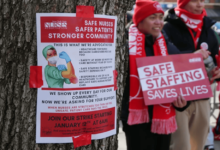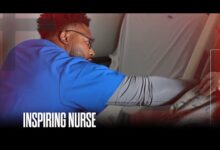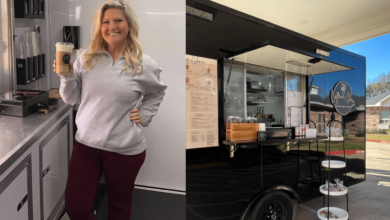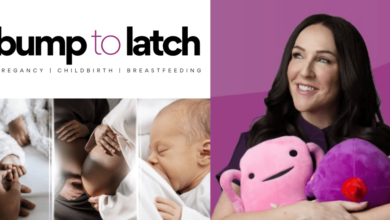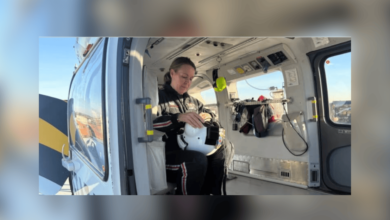Inquiry: Letby ‘excited’ to tell colleagues about baby death

Two nurses who were colleagues of Lucy Letby when she murdered seven children at a neonatal intensive care unit have given evidence at an inquiry into the case.
Letby, 34, is serving life in prison orders for the murder of the babies, and attempted murder of six others, all of whom were patients at the Countess of Chester Hospital neonatal unit between June 2015 and June 2016.
“We’re all aware that these things can happen, but we have a hard time recognising that it’s happening when it’s happening”
Ashleigh Hudson
The Thirlwall Inquiry, which began last month, is investigating how she was able to carry out the attacks undetected, and the circumstances surrounding them.
Former nurse colleagues of Letby, Ashleigh Hudson and Melanie Taylor, gave evidence to the inquiry on Thursday.
They were asked about their interactions with Letby, what suspicions they had about the cause of an elevated death rate at the neonatal unit and what they thought could be done to prevent a similar case happening in future.
Ashleigh Hudson, now an advanced neonatal nurse practitioner, was an early-career band 5 nurse working in the unit at the time of the murders.
She told the inquiry she felt that staff and families had been kept in the dark about the nature of allegations put forward about Letby, until long after the investigations had begun.
“I can just remember that I thought it was very confusing,” she said. “Now that I know more, I can understand what was happening… none of this information made sense.
“Looking back, I… have pieced it all together and we can follow a timeline of what was happening, but at the time it was very murky.”
The inquiry heard how the only information she and other nurses not close to Letby were given was a letter about clinical supervision, which all staff would have to do – but that Letby would do first.
Staff were then told that Letby was going on a secondment to another ward, not that she had been removed over concerns about her ties to the deaths.
Ms Hudson said that nothing was formally shared with nurses about concerns regarding Letby by late-2016, when she was planning a return to the unit that never materialised.
Ms Langdale asked if nurses had spoken among themselves about any suspicions they may have. Ms Hudson said she had not, herself, but added: “I [wasn’t] so naïve as to think someone isn’t capable of doing this, we have examples like Beverley Allitt; as horrible as it is to consider.
Allitt was convicted of murdering four infants, attempting to murder three others, and causing grievous bodily harm to a further six at Grantham and Kesteven Hospital, between February and April 1991.
Ms Hudson said: “We have a responsibility to think of these things, but I’m also not going to accuse someone of something, when actually there was no detail of what they’re being accused of.”
“I was very much on the fence and it was all very confusing,” she told the inquiry.
She had assumed, based on the information given to nurses on the ward, that perhaps Letby was being investigated due to a competency issue.
Ms Hudson said she and other nurses in the neonatal unit were given “very little information” about the true nature of the Royal College of Paediatrics and Child Health review, which was carried out in 2016 and was investigating concerns about Letby, and about what parents knew of the case.
“It’s only through following the trial and some transcripts of this inquiry, that I’ve recognised that patients were kept in the dark for a very long time and not informed that deaths were thought to be unexpected or unexplained,” she said. “It very much did surprise me.”

Court sketch of Lucy Letby in the dock at Manchester Crown Court in May 2023
This lack of information circulated to nurses, Ms Hudson said, put a strain on the otherwise positive and supportive relationship between medical and nursing staff at the neonatal unit.
She said: “A lot of what was going on behind the scenes, in terms of concerns about unexpected deaths and potentially worrying that someone was responsible – none of that was discussed with us.
“I do feel the divide was a symptom of that. When I first started I didn’t feel a divide [between nurses and doctors], but as time went on and following [Letby] being removed, there was an atmosphere and I didn’t have any information as to why.”
Ms Langdale asked Ms Hudson about some of her interactions with Letby around the time the killings took place, and some of the strange behaviours she exhibited.
Ms Hudson had looked after Child A, the first child to be murdered by Letby, in the days before he died.
She told the inquiry how Letby had informed her of the child’s death over text, something Ms Hudson described as unprofessional, inappropriate and made her angry.
In particular, she pointed to one text in which Letby referred to the hand and footprints of the child – taken after his death and given to the parents – as “some nice little mementos”.
“It was too much information,” she said. “The process after [a baby’s death] is a very important and sensitive time. I didn’t feel I needed that information…
“Looking at it now, knowing what I know – that terminology… it’s very upsetting, it makes me feel quite sick to be honest.”
She also gave evidence of other strange behaviours, all of which were highlighted at Letby’s criminal trial, which made Ms Hudson uncomfortable, but were not enough to make her suspicious that her colleague was a murderer.
Asked what she thought could be done to prevent a future series of murders by a clinician, Ms Hudson said better training on previous cases, such as Letby’s and that of Beverley Allitt.
She told the inquiry how she could not remember the specifics of her training on Allitt’s killings at university, but that it was only a brief session – and that the recommendation resulting from that inquiry for “heightened awareness” among clinicians was too vague.
“We’re all aware that these things can happen, but we have a hard time recognising that it’s happening when it’s happening – and that’s why we need that outside eye looking in,” she said.
To that end, Ms Hudson also said that a better, anonymous, reporting system for nurses and other healthcare staff with concerns about colleagues would help in the future.
Ms Hudson said that, currently, there was plenty of scrutiny from clinicians towards parents and the patients themselves – but not enough towards each other.
She was asked if CCTV in neonatal ward rooms would help, but Ms Hudson was sceptical, saying: “I think whatever makes parents feel safe, I have no question…
“But I don’t want to fall into the trap of thinking that might stop someone doing it again. [Letby] attacked these babies under the guise of normal care, no one saw her do something in a stereotypical which was violent or malicious.
“On CCTV, how do you know what’s in a syringe? It could be part of the process but I don’t think it’s the answer,” she said.
Melanie Taylor, who was a band 6 nurse and shift leader at the neonatal unit at the time of the murders, also gave evidence to the inquiry.

Countess of Chester Hospital in 2005
Asked if she thought CCTV would help safeguard babies in neonatal units from clinicians wishing to do harm, Ms Talor said: “Yeah, possibly. I think that might be a personal opinion and maybe that may differ between families… I think that’s something that I probably can’t answer.”
She said that 24/7 manning of any CCTV in wards would need to be done for it to be effective, adding: “It brings up a lot of questions, but also it could be beneficial. It’s a hard one to answer.”
Like Ms Hudson, Ms Taylor was also asked about her interactions with Letby.
She too described the way Letby spoke about the children, and their families, as disrespectful and “highly inappropriate”.
“I thought there were parts of her personality which were a bit strange to me,” Ms Taylor said. “I took that to be a part of a personality difference between me and her.”
When Child C was in between resuscitation attempts in June 2015, ahead of his death following Letby injecting him with air, his parents’ final moments with the child were interrupted by the nurse plugging in a cold cot and telling them: “It’s time to say goodbye to him now and put him in the cot.”
Ms Taylor said she was “horrified” when she heard this had happened.
She also told the inquiry that Letby had, at one point, told her about a baby in the unit dying in a “gossipy” way. “It was almost in a way that she was excited to tell me,” said Ms Taylor.
She was asked if these behaviours prompted suspicion among her or other nurses that Letby was behind the unexpected or unexplained deaths, and if she had considered they could have been intentional.
She said: “I didn’t have any suspicions… there was the incident where [another nurse] came to speak to me about her not paying as much attention to the baby she was meant to look after [to help with a dying child].
“I didn’t have any concerns about her nursing care… but her way of speaking to other members of staff, sometimes I felt wasn’t the most professional.”
Ms Taylor acknowledged that working in a setting with vulnerable children who could be very sick gave her and other staff “false reassurance” that the unexplained deaths could be natural.
She said: “That was my belief at the time – I thought that these babies are vulnerable… I look back at it now and no it doesn’t add up.
“But that was the majority of my career – seeing lots of babies, and a large proportion of that was babies unfortunately collapsing and dying, that made up a lot of my career at that stage.
“Hindsight makes you realise a lot of things… but at the time I thought that was part and parcel, unfortunately, of being premature.”
The inquiry will continue to hear evidence until December, with a report due to publish later in 2025.
More on the Thirlwall Inquiry

